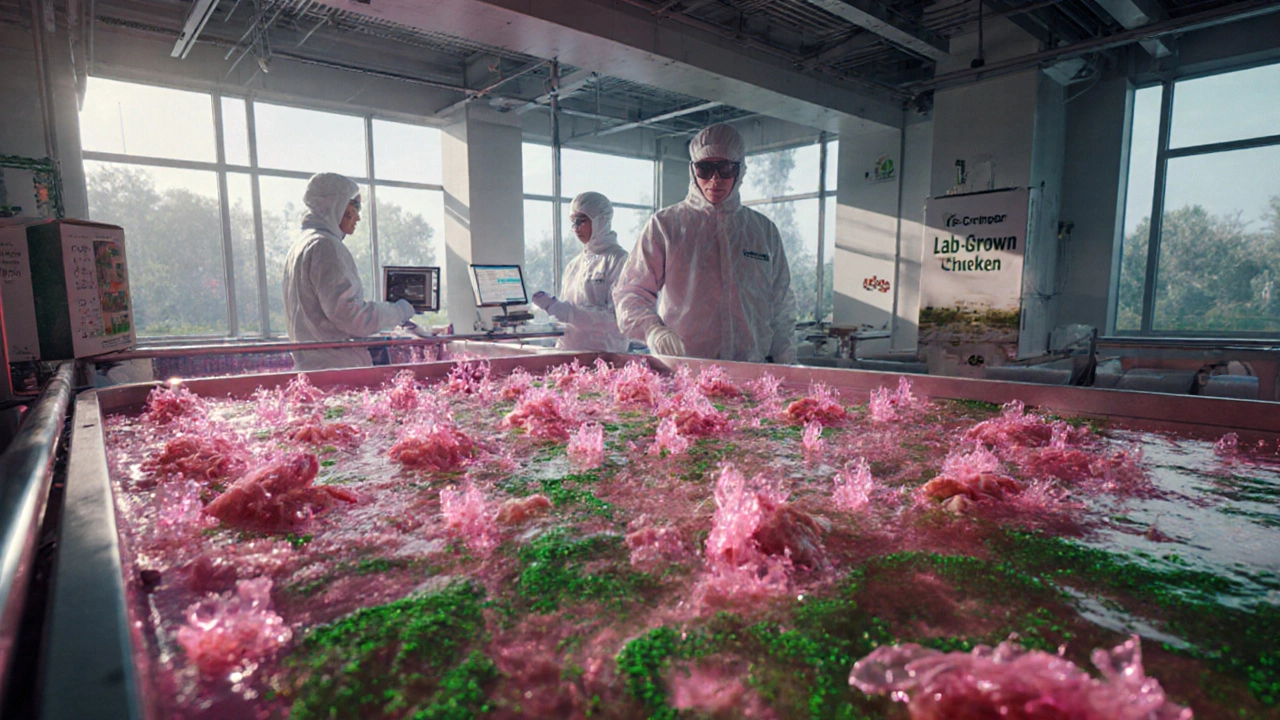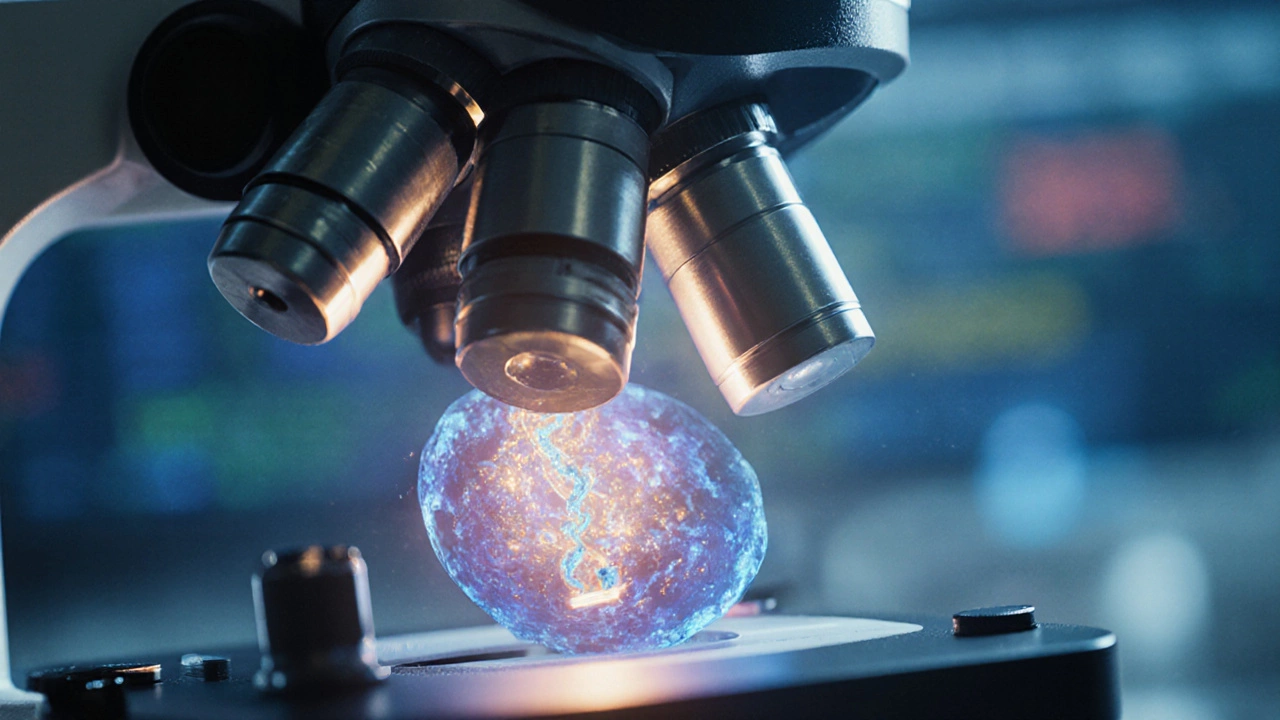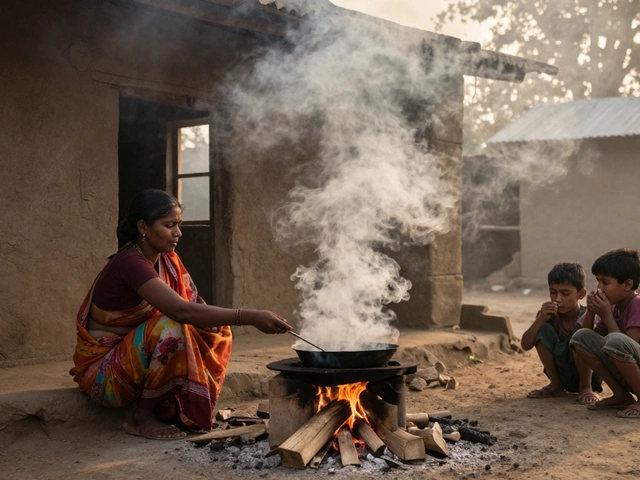Biotech Impact Calculator
Compare Biotech Solutions
Results
Biotechnology isn’t just lab coats and pipettes anymore. It’s reshaping how we treat diseases, grow food, and even clean up pollution. In 2025, the pace of change has accelerated beyond what most experts predicted just five years ago. If you’ve heard about CRISPR or mRNA vaccines but aren’t sure what’s new, here’s what’s actually working right now - not hype, not future promises, but real, deployed science.
CRISPR is now curing genetic diseases in clinics
CRISPR-Cas9 isn’t just a lab tool anymore. In 2023, the FDA approved Casgevy, the first CRISPR-based therapy for sickle cell disease and beta thalassemia. Patients in the U.S., UK, and parts of Europe are already living without painful crises or monthly blood transfusions. The treatment works by editing a patient’s own blood stem cells to produce fetal hemoglobin - a natural workaround for defective adult hemoglobin. It’s not cheap - around $2.2 million per patient - but it’s durable. Early data shows most patients remain symptom-free for over two years post-treatment. What’s next? Trials are underway for CRISPR therapies targeting inherited blindness, Duchenne muscular dystrophy, and even a form of high cholesterol caused by a single gene mutation.
mRNA tech is expanding far beyond COVID vaccines
Everyone knows mRNA vaccines stopped the pandemic. But that’s just the start. In 2024, Moderna and BioNTech launched the first mRNA vaccines for influenza and RSV. These aren’t just better versions of old shots - they’re faster to update. When a new flu strain emerges, manufacturers can design a new mRNA vaccine in under 10 days. The same platform is now being tested for melanoma, ovarian cancer, and even Type 1 diabetes. In a landmark trial, 44% of high-risk melanoma patients who received an mRNA cancer vaccine after surgery remained cancer-free for three years, compared to 26% who didn’t. The trick? The vaccine teaches the immune system to recognize tumor-specific proteins unique to each patient’s cancer.
Synthetic biology is making factories out of bacteria
Forget petrochemicals. Companies like Ginkgo Bioworks and Zymergen are programming bacteria to produce ingredients once extracted from plants or synthesized in oil refineries. In 2025, a new strain of engineered yeast can turn sugar into spider silk proteins - stronger than Kevlar and 100% biodegradable. This silk is now in luxury fashion brands and surgical sutures. Another startup in Bangalore is using modified E. coli to make vanillin - the flavor in vanilla extract - without any vanilla beans. It cuts water use by 95% and eliminates deforestation linked to vanilla farming. These aren’t prototypes. They’re in production, scaling fast.

Personalized medicine is moving from theory to daily practice
Doctors used to treat cancer with one-size-fits-all chemo. Now, they’re sequencing a patient’s tumor DNA and matching it to drugs that work specifically for that mutation. In 2025, over 300 targeted cancer therapies are approved globally, and 60% of new lung cancer patients get tested for at least five gene mutations before treatment. For rare diseases, whole-genome sequencing is now a first-line diagnostic tool. A child in India with unexplained seizures was diagnosed with a previously unknown mutation in the SCN1A gene - a finding that led to a switch from ineffective drugs to a ketogenic diet, reducing seizures by 80%. Hospitals in Mumbai, Delhi, and Bengaluru now offer rapid genomic testing with results in under 72 hours.
Lab-grown meat is hitting grocery shelves
Remember the $300,000 lab burger from 2013? In 2025, you can buy cultivated chicken nuggets in Singapore, the U.S., and Israel for $12 a pack. The process starts with a tiny biopsy from a living chicken. Cells are grown in bioreactors with nutrient-rich media - no hormones, no antibiotics, no slaughter. The result? Meat that’s identical in taste and texture, but with 90% less greenhouse gas emissions and 95% less water use. The FDA approved the first U.S.-made cultivated chicken in 2023, and by 2025, five companies have scaled production to over 1 million pounds annually. It’s not yet cheaper than conventional chicken, but the gap is shrinking fast.
AI is accelerating drug discovery
It used to take 12 years and $2.6 billion to bring a new drug to market. Now, AI is cutting that time in half. In 2024, Insilico Medicine used its AI platform to design a new fibrosis drug in just 18 months - from target identification to clinical candidate. The molecule didn’t exist in any chemical library; the AI invented it. Phase 2 trials showed it reduced lung scarring by 40% in patients. Similarly, DeepMind’s AlphaFold 3 can now predict how proteins interact with drugs, RNA, and DNA - something it couldn’t do two years ago. This lets researchers simulate millions of drug-target combinations in days instead of years. In Bangalore, a startup called GenoAI is using this tech to find treatments for tuberculosis, a disease that kills over 200,000 Indians every year.

Gene drives could eliminate malaria - but should we?
One of the most controversial advances is gene drives - a genetic tool that forces a trait to spread through an entire wild population. In 2024, scientists in Kenya released genetically modified mosquitoes engineered to produce mostly male offspring. After six months, local mosquito populations dropped by 90%. The goal: stop malaria transmission. But the same tech could be used to wipe out invasive species or even alter crops in the wild. There are no global rules yet. The WHO recommends strict containment, but some African nations are moving ahead anyway. It’s a powerful tool - and one that could change ecosystems forever.
What’s next? The next five years
By 2030, we’ll likely see:
- At-home CRISPR kits for monitoring genetic health risks - like a DNA blood test you can do weekly.
- Bioprinted skin and corneas for transplants - already tested in animal trials.
- Microbial pills that replace antibiotics by targeting only harmful bacteria.
- Engineered algae that capture CO2 and turn it into bioplastics at industrial scale.
The line between biology and engineering is disappearing. Biotech isn’t just about fixing what’s broken - it’s about redesigning life itself. And it’s happening faster than most realize.
What is the most important biotechnology advancement today?
The most impactful advancement right now is CRISPR-based gene therapies being used in clinics to cure inherited blood disorders like sickle cell disease. Unlike experimental treatments, these are FDA-approved, available to patients, and producing life-changing results. They prove gene editing can be safe, precise, and durable in humans.
Are mRNA vaccines only for infectious diseases?
No. mRNA technology is now being used in cancer vaccines, autoimmune disease treatments, and even allergy therapies. Moderna has trials underway for a vaccine that trains the immune system to ignore allergens like peanuts. The same platform can deliver instructions for any protein - so it’s not limited to viruses.
Is lab-grown meat safe to eat?
Yes. The FDA and USDA have approved cultivated meat for sale in the U.S. and Singapore after rigorous testing. It’s grown in sterile bioreactors, so it doesn’t carry the same risks of E. coli or salmonella as conventional meat. It also contains no antibiotics or growth hormones. The main difference is texture - some brands are still perfecting the fat marbling, but taste tests show it’s nearly identical.
How is AI helping biotech companies?
AI cuts years off drug development by predicting how molecules will behave in the body. Instead of testing millions of compounds in labs, AI narrows it down to a few hundred with the highest chance of success. It also helps identify new disease targets by analyzing patient DNA data across millions of cases. In India, AI models are being trained on local genetic data to find treatments for diseases common in South Asian populations.
Can biotechnology solve climate change?
It’s part of the solution. Engineered microbes can break down plastic waste, capture carbon from the air, and replace fossil-fuel-based materials like plastics and dyes. Companies are already making bio-based concrete, leather, and jet fuel. While it won’t replace renewable energy, biotech reduces emissions in industries that are hard to decarbonize - like agriculture and manufacturing.
What you should watch for next
If you’re tracking biotech, keep an eye on three things: regulatory approvals for gene therapies in developing countries, the first commercial use of gene drives in the wild, and the price drop of CRISPR treatments. The next big shift won’t come from a single breakthrough - it’ll come from these technologies becoming affordable, accessible, and routine. That’s when biotech stops being science fiction and starts being everyday life.



